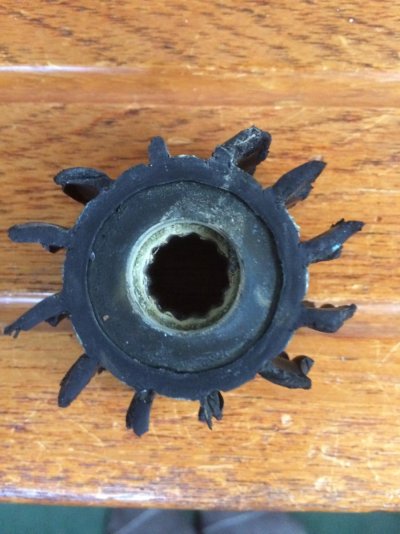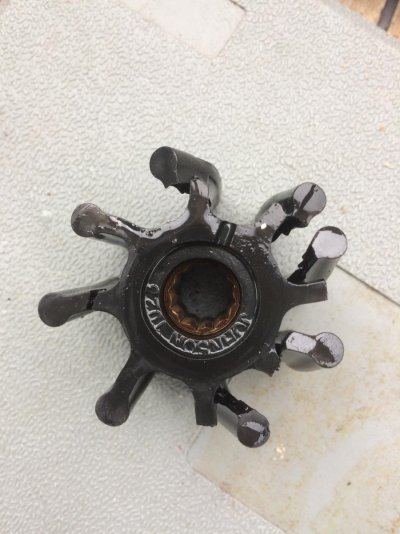dhays
Guru
- Joined
- May 26, 2015
- Messages
- 9,567
- Location
- Gig Harbor, WA
- Vessel Name
- Kinship
- Vessel Make
- 2010 North Pacific 43
This last weekend I had my first taste of a shredded impeller in the cooling system.
Impeller was just shy of 2 years old.
For only the 2nd time in my boating life I left the dock with the raw water seacock closed.
Shortly after leaving the dock my wife mentioned a different exhaust note. Sure enough, I went back to the stern and listened and it sounded like a dry stack exhaust. We were headed to the pumpout dock so we continued, docked, emptied the holding tank and went back to our dock. Maybe about 10 minutes at idle each way.
When I opened up the impeller cover the impeller essentially had no blades left.
I had to take apart part of the pump and disconnect the hoses to get all the pieces out. I "think" I got all the pieces out.
So, next time the impeller will be checked at a year instead of two.
Impeller was just shy of 2 years old.
For only the 2nd time in my boating life I left the dock with the raw water seacock closed.
Shortly after leaving the dock my wife mentioned a different exhaust note. Sure enough, I went back to the stern and listened and it sounded like a dry stack exhaust. We were headed to the pumpout dock so we continued, docked, emptied the holding tank and went back to our dock. Maybe about 10 minutes at idle each way.
When I opened up the impeller cover the impeller essentially had no blades left.
I had to take apart part of the pump and disconnect the hoses to get all the pieces out. I "think" I got all the pieces out.
So, next time the impeller will be checked at a year instead of two.



